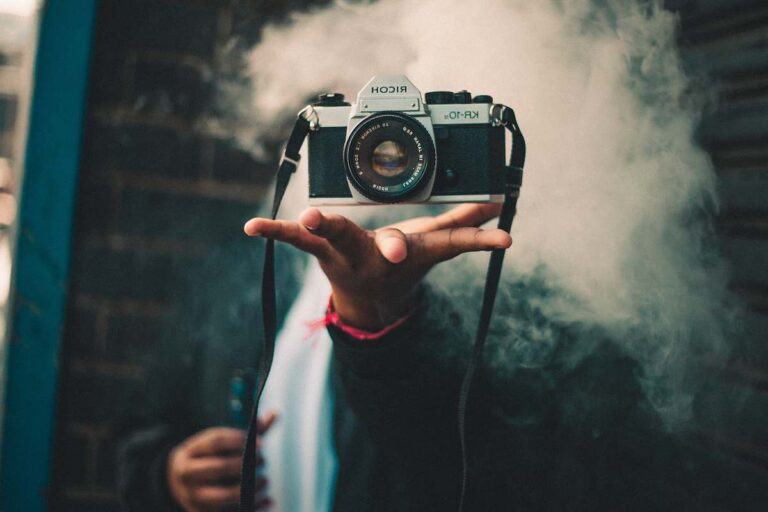It might be challenging to select the finest travel camera. You’ll need a camera that can take crisp still photos and videos of your numerous travels while also fitting easily into your pocket for shooting on the fly. Uncertain about where to begin?
Here, is a variety of travel cameras before choosing your top picks for this list. The Sony Cyber-shot RX100 VII is currently the top pick for the finest camera for traveling. It is a little camera with a 1-inch sensor, lightning-fast processing, and a wide zoom range that is ideal for filming while moving about.
We strongly recommend the Fujifilm X-T30 II mirrorless camera if you’d choose a travel camera with the adaptability of interchangeable lenses. It has interchangeable glass, a chic vintage casing, and records 4K video in addition to having these features. Additionally, handling the camera is amazing.
You may discover a superb alternative here for each type of travel camera you’re looking for. Only the best candidates from our extensive examination are chosen. You can purchase with confidence knowing that you’re looking at the top cameras for every sort of traveler according to your pricing comparison tool.
What we will see here:
Panasonic Lumix TS200 / ZS200
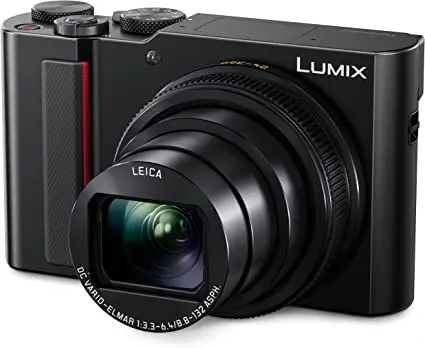
The standard for point-and-shoot photography has now raising with smartphones, so tiny cameras need to stand out in order to maintain their position in your travel kit. With its substantial 1-inch sensor and functional 15x optical zoom, the ZS200/TZ200 achieves this. Even though Panasonic‘s travel zoom is at the higher end of the “budget” compact camera market, it is still quite affordable.
Despite the smartphone’s improvements in multi-frame processing, its huge 1 sensor delivers images with higher natural picture quality than the majority of them.
The drawbacks of this travel camera are that the colors were excellent and vivid, and the dynamic range enables you to post-process. If necessary, restore lost shadow information. Vignetting and distortion are well under control, even at 24mm. Additionally, a helpful efficient digital viewfinder makes it simpler to frame pictures in strong light. That’s still the greatest travel zoom small camera on the market today, however, it is still pretty expensive.
Specifications:
- 1-inch sensor with 20.1 MP
- 24-360mm lens, f/3.3-6.4
- 3.0-inch touchscreen with 1,240K dots.
- Seeing aid: EVF
- Continuous shooting: 10 frames per second
- 4K movies
- Beginner/Intermediate user level
Cyber-shot RX100 VII from Sony
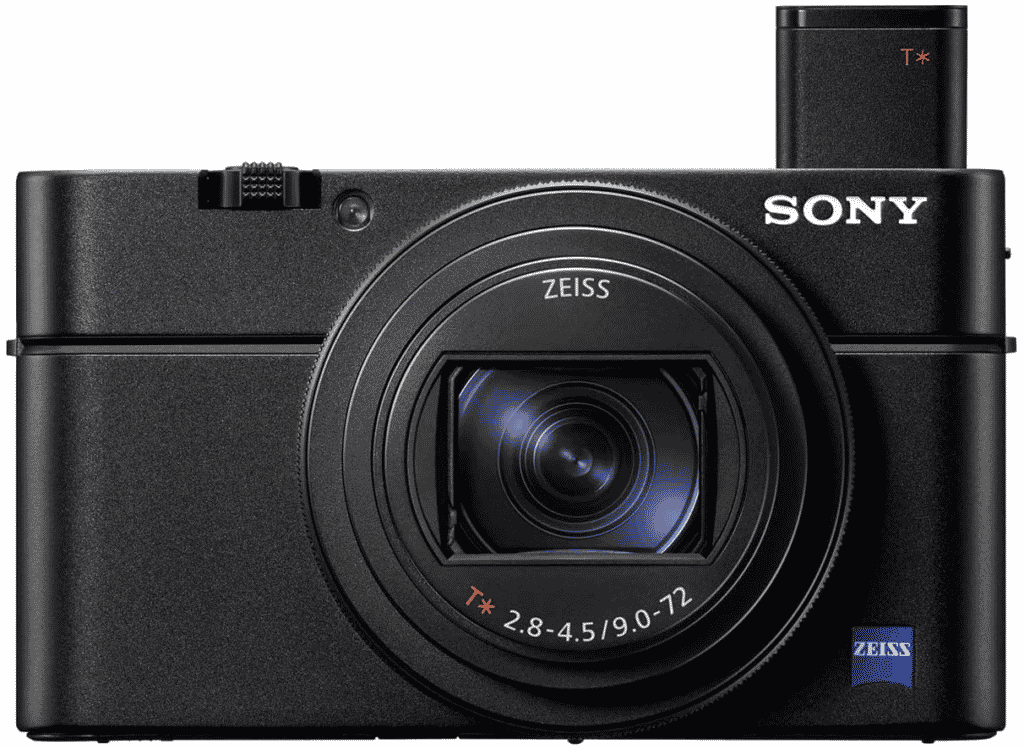
The original RX100 from Sony was the very first compact camera that can fit in your pocket and includes a huge 1-inch sensor, transforming premium small cameras. They were always excellent for travel cameras, but perhaps occasionally cast aside in favor of super-zoom competitors due to a relatively small zoom lens. But, things are starting to change, when we get to the RX100 VI. This is associated with a very much bigger lens than ever before. Now, with the most recent RX100 VII model, you can see the significant refinement.
Losing the ultra-wide aperture of earlier generations is the price of making the lens longer, but if you’re mostly planning to be shooting in sunny locations, this generally won’t be a major concern. The RX100 VII has a tonne of power beneath the hood as well. It has both features that are less unusual, like a preposterous 90fps burst mode, and ones that are more typical, like 4K video.
Although the video quality is the finest you’ll find on a small, image quality is outstanding, with the testing revealing exceptional clarity even at ISO settings in the center of its sensitivity range. Although this model’s high asking price is a major drawback. If you want the finest of the best travel camera for your trips. If the RX100 VII’s asking price is beyond your pricing range, check at more affordable previous versions across the board.
Specifications:
- 1-inch sensor with 20.1 MP
- 24-200mm lens, f/2.8-4.5
- 3.0-inch touchscreen with a tilt angle and 921K dots
- Seeing aid: EVF
- 90 frames per second, continuously
- 4K movies
- User level: Expert
Nikon Z FC

Travel photography is mostly about preserving memories, and Nikon’s Z FC completely embraces the idea of nostalgia. It is an exquisite tribute to the 30-year-old Nikon FM2, replete with classic style, size, and controls. Despite its vintage appearance, the camera is highly contemporary on the inside and shares many of its specifications with the powerful Nikon Z50. Even while some photographers might want a full-frame sensor, the Z FC’s APS-C sensor excels at taking still photos and 4K videos with the help of dependable tracking autofocus. In the tests, the 20.9MP sensor’s dynamic range was superb, and its handling of noise was good, especially below ISO 800.
Another great feature of this device is its multi-angle touchscreen, which makes it simple to take selfies while traveling or folds away entirely for a leather-back appearance that lets you think you’re back in the 1980s. Although the Nikon Z FCisn’t as durable as the camera it was available after (it lacks weatherproofing, for instance). It is nevertheless a stunningly distinctive camera for everyday use. It’s also a simple one to manage while on the go thanks to discrete dials for ISO, shutter speed, and exposure, as well as a reversible lens ring.
Specifications:
- Sensor: APS-C 20.9MP
- Nikon Z-mount lens
- 3.0-inch touchscreen with a variable angle and 1,040K dots.
- 2,360K-dot electronic viewfinder
- 11 fps for continuous shooting
- 4K at 30 frames per second for movies
- Level of the user: Enthusiast
X-T30 II by Fujifilm
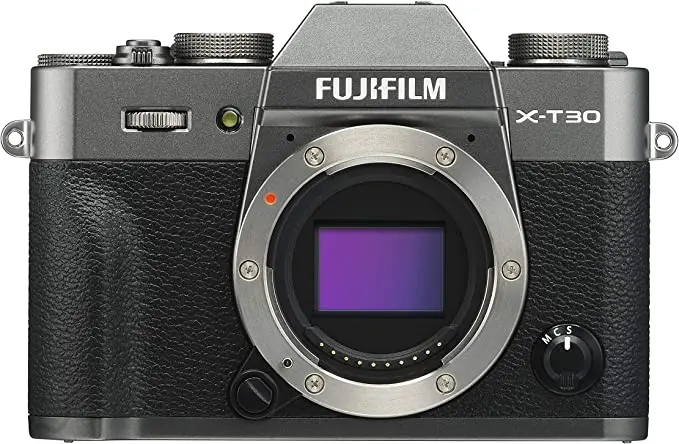
Even though the X-T30 II only slightly improves upon its predecessor, we don’t mind. If you want to switch lenses for various looks and shooting scenarios, the superb upgrade to the original X-T30 is equally perfect for travel and regular shooting. Its main component is Fujifilm’s dependable 26.1MP APS-C sensor, but its major edge over competitors such as the Nikon ZFC is its selection of superb X-mount prime lenses. A lovely combo is the X-T30 II with a lens like the XF35mm f/2 if you like street photography in particular.
The X-T30 II is not weather-resistant, despite the fact that many XF lenses are, and it lacks in-body image stabilization (IBIS), which is a drawback. If you photograph mostly in daylight, this won’t be a big problem, but if you really require IBIS, it’s worth looking into the bigger Fujifilm X-S10. Other than that, the X-T30 II is a great travel companion. It has a great sensor that offers fantastic results in testing, strong autofocus, and reasonably quick shooting, making it a versatile option that is well worth considering for your city getaways.
Specifications:
- 26.1MP APS-C X-Trans CMOS sensors
- Camera: N/AM
- 3.0-inch touchscreen with 1,620 k dots
- 2.36 million dots in the EVF
- 8 frames per second (mechanical), 20 frames per second (electronic)
- Films: 4K/30p
- Beginner/Intermediate user level
Fujifilm X-S10

The Fujifilm X-S10 is one of those mirrorless cameras that really strikes the perfect spot of size, price, and functionality for most people. Although it is neither a basic camera nor as tiny as a high-end compact, you get plenty for your money. Additionally, the X-S10 is a fantastic, adaptable travel camera that works well with most sorts of lenses.
Although the X-S10 isn’t officially weatherproof, its superb magnesium alloy construction will hold up well to a lifetime in a backpack. Its broad grip makes for good handling whether you’re using one hand to carry it around or connecting a bigger zoom lens.
Most notably, the APS-C sensor in the X-S10 offers the greatest image quality possible for a camera of this size, and it also works well for a 4K video. Real-time tracking AF from Sony edges out the autofocus, although it is still quite reliable in most circumstances. The in-body image stabilization (IBIS), which is a tremendous benefit for static shooting, is also a secret weapon, especially when it is in use with a short, unstabilized prime lens. Fujifilm FX-S10 is the mirrorless camera we’d like to pack on trips, however, the Nikon Z50 may be a touch more durable.
Specifications:
- APS-C sensor size
- Dimensions: 26.1MP
- 2.36 m dots in the viewfinder
- 3-inch touchscreen monitor with 1.04 million dots
- 425-point hybrid autofocus
- 20fps and 8fps, respectively, are the maximum continuous shooting rates (electronic shutter)
- Movies: 30p in 4K
- Beginner/intermediate user level
Olympus PEN E-P7
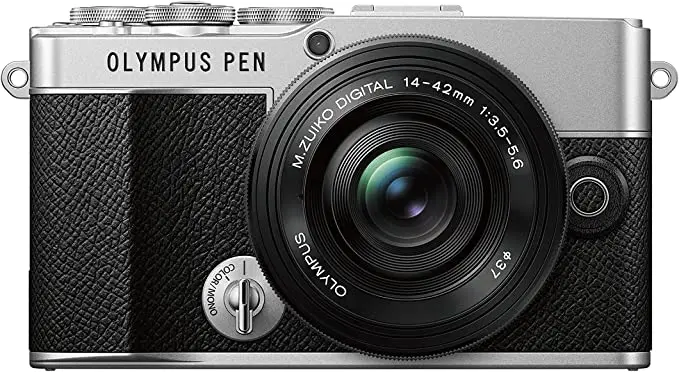
The Pen E-P7 is a new, portable mirrorless camera that borrows features and design cues from earlier Olympus products. Even while its tried-and-true TruePic VIII engine won’t grab attention, its appealing vintage appearance, compact design, and efficient five-axis image stabilization make it an appealing option for novices and travelers.
While its video specifications won’t wow vloggers, the absence of a viewfinder may be a deal-breaker for the others. It’s also unfortunate that the touchscreen can just tilt, rather than completely articulate, to provide for more framing options. However, the cost is a slim, fashionable body that weighs only 430g. The E-P7 is more tempting than many full-frame competitors for street shooting in the tests because of its small size and bright, punchy still images, even if some previous Olympus models provide superior overall value because of their lower price.
Specifications:
20MP Micro Four Thirds sensors
Micro Four Thirds lens
3.0-inch touchscreen display with 1,040K dots
Observer: None
: 15 frames per second
4K at 30 frames per second for movies
User Experience: Novice
What kind of camera should I choose for a trip?
There are cameras like the Canon EOS M6 Mark II and the Fujifilm X-T30, as well as the Nikon Z50, an APS-C model that is ideal for travel. There are also Micro Four Thirds cameras like the Olympus PEN E-P7and the Panasonic G90 that offer the most versatility due to their overall very compact system size.
What should I look for when picking a camera for traveling?
Megapixels are a measurement of a camera’s resolution size. The quality of the images increases with the megapixel count. You may not need a camera with a lot of megapixels; any camera with 20 or more will work well for capturing trip photos.
Why are mirrorless cameras superior?
The benefits of mirrorless cameras often include being lighter, smaller, quicker, and better for video, but this comes at the expense of having access to fewer lenses & accessories. A greater variety of lenses, typically superior optical viewfinders and a significantly longer battery life are all benefits for DSLRs.
Conclusion:
If you are planning to go on a vacation with your family or friends and want to capture every enjoyable moment with your camera, but don’t have a camera especially for traveling, and want to buy a travel camera.
Here are some of the choices for you here and if you want to buy one of them then you can buy it from the links given above. Here is the best travel camera Cyber-shot RX100 VII from Sony. This camera is especially for traveling so you won’t be unhappy for purchasing it.


